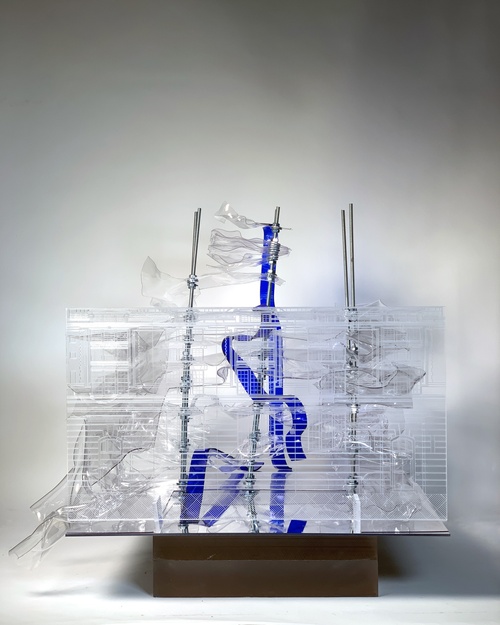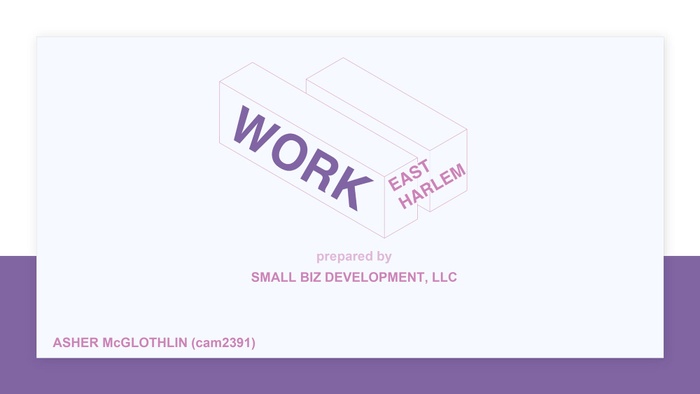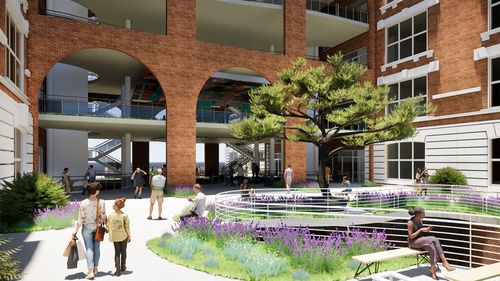Introduction
Real Estate Development
The Masters of Science in Real Estate Development (MSRED) degree program is a one-year, full-time, immersive learning environment for the technical training, intellectual advancement, and practical formation of the most accomplished and prepared professional for the real estate industry. The MSRED program is uniquely resourced to provide the various theoretical explorations and technical skills needed for the real estate sector, in addition to effective training in the synthesis of decision-making through development projects and pertinent industry case studies.
The conceptual construct of this amalgamated learning is immediately referenced to the fundamental theories of urban planning and architectural design at GSAPP. Instructors who practice at the top levels of their respective professions in New York City provide the necessary technical knowledge from various disciplines—such as finance, market analysis, construction methods, law, data science, and project management—to perform in the industry. The application of the theory and skills to resolving various real estate challenges and issues are given rich, complex, and exciting examples in New York that also connect and have implications globally.
Furthermore, with the growing entrepreneurial and technologically advanced environment of Columbia University, the program includes training and proficiency in real estate databases and the digital tools of analysis, with the opportunity to explore emerging applications being investigated in the Center for Urban Real Estate, the affiliated research laboratory. It is anticipated that within this rich, innovative environment, the program’s curriculum development will continue to produce further synthesized forms of teaching and research to produce the most effective, intellectually progressive, and multi-faceted real estate professional.
Fall 2021
Pre-Development Analysis
As students of real estate development, it is important to learn how to develop a proposition for a site or existing building. Deciding what to build where is by no means – even for the most experienced developer – a matter of instinct. Instead, it requires following a deliberate and iterative process that includes developing an understanding of a site, testing certain development programs, putting together a development team, arranging funding, and evaluating the likelihood of success given a set of economic, regulatory and community considerations.
To develop these skills, students were asked on a weekly basis to apply material and techniques covered in class to a specific site or sites selected by the instructor. This included assessments and due diligence relating to the site, the neighborhood and the market, as foundational building blocs for the process of “ideation,” i.e., developing viable programmatic options for a site. Having determined these initial parameters, students undertook a high-level financial assessment of the costs and revenues likely to be associated with one or more options they select for the site; together, these preliminary back-of-the-envelope financial calculations and associated risk assessment provided a good early-stage indicator of the project’s viability.
Spring 2022
Bridge Studio
This studio responded to five focal points, or pillars, of development: equity, advocacy, adaptability, variability, and sustainability. These pillars acted as questions to redefine what it means to be a critical developer, an architect, or a participant in the physical and imagined environments. Investigations occurred through research, drawing, modeling, making, collaborating, investigating, interacting, and outreach. From human to non-human (machine learning (ML) and algorithms), this studio offered diverse ways of reading, seeing, and understanding the human condition within the built environment. Apart from the resulting architectural bodies, or archi-types, it focused on interactions between the human body and the urban body: crossing the lines of transportation, adaptation, and configuration to project a future reality of what it means to inhabit the city.

Fragmented Inversions
Through model making and quantitative analysis in excel, this project explores the relationshi...

H to N
The ambition of this studio was to bridge the gap between architecture and real estate which e...

Public Building No1
In order to accommodate a growing population and serious housing needs in the community, the e...
Spring 2022
Capstone: Development Case Studies
The capstone course synthesizes the learnt analytical, comparative and critical processes involved in real estate development projects, transactions and investments. It provides an opportunity for the student to demonstrate their understanding of the dynamics of real estate development, its capital requirements, and delivery procedures.
Spring 2022
Property Technology Seminar
Virgil Abloh’s instagram bio points to his eponymous domain name, forward slash, landiown. Land—in this context—refers to Abloh’s personal website, a property accessible to anyone with an Internet connection and a device. Land on the world wide web, like real estate, can be designed and built up to support communities of skyscraper scale. Land can also be structured like a pasture in Wyoming, a productive and mechanical revenue-generating system. In this course, we will investigate the intersections of property and technology, across all dimensions of the built environment.
Fall 2021
The Art of the Development Proposal
This course introduced students to the comprehensive nature of creating a development proposal and provided an overview of the process including the integration of finance, marketing, spatial programming, architectural design, construction techniques, and urban planning. Using a public solicitation recently issued by a city agency as a framework, students learned how to analyze a site, evaluate the real estate opportunity it presents, craft a vision that meets the desires of the ownership entity, demands of the market and the needs of the community, maximize value for the municipality, the community, and the developer, and prepare a professional development proposal.
Fall 2021 and Spring 2022
Field Trips
1
ULI Hines Student Design Competition




































